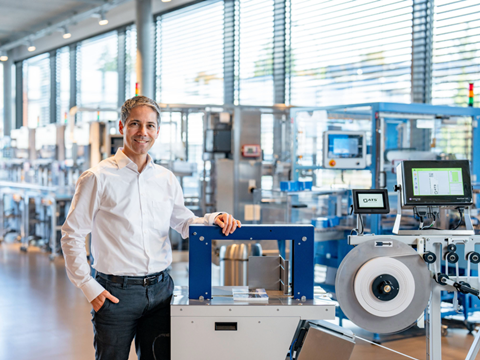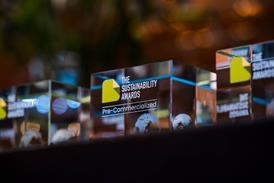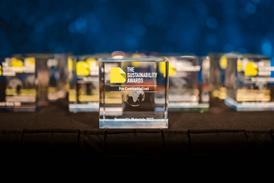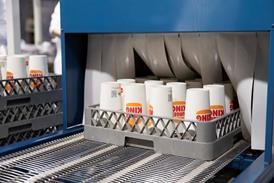
Mizuki Yuasa, head of R&D at ATS-Tanner, dives into the US-2500 banding machine line – designed for speed, simplicity, flexibility, energy efficiency, and even recycled substrate use – in this edition of our ‘In Conversation With…’ series.
Can you give us an overview of the US-2500 product line? What can each model offer to customers, and is there an overarching principle that unites them?
The US-2500 series stands for maximum user-friendliness, reliability, and quality. The intuitive touchscreen user interface makes operation simple, allowing functions and settings to be accessed quickly and easily.
All models are based on a common platform and have been optimized for specific applications:
The US-2500 AD-A model is designed for integration into automated production processes. It offers maximum process control and can be seamlessly integrated into existing production lines. The side pull-out system with quick threading ensures fast and ergonomic band replacement – ideal for industrial applications with high throughput.
The US-2500 TTP variant extends the functionality to include thermal transfer printing. It enables precise printing of barcodes, QR codes, batch numbers, or variable data on the banderol. In combination with the print mark reader, exact positioning of the print images is guaranteed – particularly relevant for industries such as logistics, food, and pharmaceuticals, where traceability and labelling are essential.
The US-2500 MDM model is designed for processing large products. The sophisticated dispenser system supports fast and ergonomic band replacement. This makes the MDM particularly suitable for applications with large packaging units or special formats.
The US-2500 series combines standardization with individual customizability - a consistent concept that offers our customers maximum efficiency and investment security.
What product applications do the machines serve, and do their operations vary based on packaging format (multipacks, cartons, trays, etc.)?
The US-2500 series is designed for an impressive range of product applications from the food industry to logistics, textiles, and pharmaceuticals.
The machines are ideal for bundling, sealing, labeling, and marking products in a wide variety of packaging formats such as multipacks, cartons, trays, or even loose items.
Typical applications include:
- Takeaway trays: hygienic closing and sealing without adhesive.
- Retail products: shelf-ready promotional multipacks with reduced material usage.
- E-commerce and logistics: grouping and stabilizing shipping items.
- Laundries: bundling and labelling washed and folded laundry stacks.
The functionality varies depending on the packaging format and level of automation.
Stand-alone machines are operated manually. The product is inserted and the banding process is triggered by a presence sensor or foot pedal.
In fully automated systems, products are grouped, aligned, measured, labelled, banded, and processed directly all in one continuous process.
In between, there are numerous intermediate solutions that are individually adapted to customer requirements. The modular design of the US-2500 series allows almost any application to be implemented efficiently and economically.
How does the US-2500 lineup account for high-throughput packaging lines? Does it consider factors like uptime or changeover time?
The US-2500 series is optimally designed for high-throughput packaging lines. Thanks to their modular architecture and robust construction, the machines can be seamlessly integrated into automated processes – even with fast cycle times.
We have paid particular attention to minimizing changeover times. The side pull-out system with quick threading and tool-free release allows the band to be changed quickly and ergonomically.
We have also focused on maximizing uptime. The machines are designed for continuous operation and offer a high level of process reliability – even under high-volume industrial conditions.
Integration is very easy. Interfaces and control concepts enable smooth integration into existing lines and control systems.
Our specialists work closely with customers right from the planning phase to define the optimal configuration for the respective application. This ensures that the US-2500 machines are not only technically impressive, but also economically viable.
Regarding the US-2500 TTP in particular, did you face any challenges when combining banding and labelling functions into a single machine? How did you overcome them?
Combining banding and labelling functions in the US-2500 TTP was less of a technical challenge than a question of smooth system integration.
Thanks to our modular machine architecture and close cooperation with various printer manufacturers, we were able to integrate the printing functions efficiently and reliably into the banding process.
The printer units can be flexibly configured and integrate seamlessly into the banding process—including precise positioning of the print images and intuitive operation via the central user interface. The result is a solution that is both functionally and economically convincing and meets the requirements for traceability and product labeling.
Where does sustainability come into play? Does the US-2500 series have any implications for factors like energy consumption, material usage, or waste reduction?
Sustainability has always been a key concern for ATS-Tanner. This has also been taken into account in the US-2500 series – in terms of durability, energy efficiency, and material savings.
The machines use ultrasonic technology, a particularly energy-efficient bonding method. Compared to conventional packaging techniques, it requires only a fraction of the energy.
ATS-Tanner also relies on environmentally friendly solutions for consumables: for example, TruePaper, a recyclable paper band, and PCR film with a recycled content of at least 35%, which is particularly suitable for applications where plastic is required. The targeted use of these materials not only reduces waste, but also significantly improves the ecological footprint of the packaging line.
In addition, the US-2500 series impresses with its durability and high reparability. The machines are robustly constructed, designed for a long service life, and engineered so that wear parts are easily accessible and quick to replace. This not only reduces downtime but also contributes to the sustainable use and value retention of the investment.
Banding with the US-2500 series is therefore one of the most resource-efficient methods for banding, labelling, presenting, or sealing products.
How do you see the range evolving in the next few years? Have you introduced any future-proofing measures?
The US-2500 series forms the basis for a long-term and future-proof product strategy.
We are deliberately focusing on this powerful platform and will continue to expand the product line – always in line with the specific requirements of our customers and developments in the market.
The modular architecture allows us to efficiently integrate new functions and variants without replacing existing systems. This results in a growing portfolio that remains flexible, scalable, and technologically up to date.
With the US-2500 series, we are creating a platform that meets not only today’s requirements but also those of the future – technologically, economically, and sustainably.

















